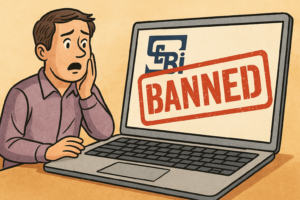By dissecting “Reminiscences of a Stock Operator,” we hope to distil the timeless lessons that apply to traders and investors navigating the current financial markets.
In the world of finance and investment, there are a few classic pieces that stand the test of time and provide unchanging wisdom, applicable even in the rapidly shifting landscapes of financial markets. One of these revered works is “Reminiscences of a Stock Operator,” penned by Edwin Lefèvre in 1923. Drawing from the experiences of legendary trader Jesse Livermore, the book offers a candid look into the life and strategies of one of the most influential traders in history.
Jesse Livermore, or Larry Livingston as referred to in the book, was not your average stock trader. His career, which was marked by both spectacular successes and devastating failures, teaches us important lessons about the nature of financial markets and the psychology of trading. From the trading pits to a one-man operation, his story reveals that trading goes beyond mere number crunching – it involves a deep understanding of market psychology, adeptness at identifying trends, and resilience in the face of uncertainty.
Even after nearly a century since its publication, the book continues to be a treasure trove of insights into the cyclical nature of markets, risk management, trading strategies, and more.
Understanding these lessons is crucial for any market participant, as they provide context and enrich our understanding of market behavior. They remind us that the game of stocks is not merely transactional, but rather an intricate dance of strategy, psychological agility, and patience.
In this blog post, we will delve into 18 key ideas from the book, weaving them with relevant examples from today’s financial markets. We will explore concepts like pivots, the Central Pivot Range (CPR), and delve into the behavioral aspects that influence trading decisions. By the end, we will have a well-rounded understanding of how the wisdom of the past can guide our present actions in the stock market.
- The Importance of Self-Knowledge:
One of the key themes in the book is the emphasis on knowing oneself. Livermore often asserted that it’s not the market that beats the trader, but the trader himself. This concept applies to today’s traders who may sometimes overlook the importance of understanding their risk tolerance, trading style, and emotional triggers, which all have significant impacts on their trading outcomes.
- Understanding Market Psychology:
Livermore was a master at reading the psychology of the market. He understood that prices are driven by the collective emotions of the market participants – fear and greed. This is especially relevant in the current era of social media-driven investing, where crowd sentiment can often drive stock prices.
- Trading with the Trend:
Livermore was a trend follower. He believed in going with the market trend rather than trying to predict tops and bottoms. This timeless advice continues to be the mantra for many successful traders today who employ trend following strategies, which is especially useful in highly volatile markets.
- Importance of Patience:
One of Livermore’s well-known quotes is, “It was never my thinking that made the big money for me. It was always my sitting.” He was emphasizing the virtue of patience in trading. In the era of high-frequency trading, this lesson is all the more relevant. A well-timed entry or exit can often make the difference between profit and loss.
- Knowing When Not to Trade:
Livermore often abstained from trading when he was unsure. This notion of discernment in trading has become particularly pertinent today with the proliferation of trading instruments and platforms.
- The Role of Stop-Loss Orders:
Livermore emphasized the need for a protective stop-loss order to manage risks. By predetermining the level of loss you’re willing to accept, you protect your portfolio from catastrophic losses. This remains a vital strategy in today’s fast-paced markets, particularly when dealing with highly volatile assets.
- The Danger of Overtrading:
Livermore often cautioned against overtrading. In the age of day trading and easy access to financial markets, this advice is critical to avoid burning out and making ill-informed decisions due to high trading frequency.
- The Significance of Price and Volume:
Livermore paid close attention to the relationship between price and volume. Significant price changes accompanied by high volume often signaled a strong market move. This principle remains a fundamental aspect of technical analysis used by traders today.
- Adapting to Market Changes:
Despite his preferred strategies, Livermore was not rigid. He knew that the market is dynamic, and a successful trader must adapt. This idea rings true today as markets are more global and interconnected than ever, requiring constant adaptation.
- The Role of Pivots and CPR:
A pivot point is a technical analysis indicator used to determine the overall trend of the market over different time frames. Livermore, while not using this tool explicitly, certainly traded around such key levels. The Central Pivot Range (CPR) identifies a range around the pivot point. It can play a crucial role in intraday trading strategies by identifying key areas of support and resistance.
- Speculation and Investment:
Livermore understood the difference between speculation (trading) and investment. He noted that an investor should be patient and must understand the value, while a trader can profit from price fluctuations. This distinction is vital in today’s world where these lines often blur.
- Understanding Market Manipulation:
Livermore was aware of the manipulation in financial markets. Today, while regulations have tightened, understanding market manipulation is important to avoid falling into traps set by larger market participants.
- Learning from Mistakes:
Livermore recognized his mistakes and learned from them. This humility and willingness to learn is a key characteristic that every trader should emulate.
- The Danger of Tips and Insider Information:
Livermore warned against the danger of trading on tips or insider information, which more often than not, landed him in trouble. In an era where information is abundant, discerning valuable information is an essential skill.
- The Principle of Contrarian Investing:
Livermore occasionally practiced contrarian investing—going against the crowd when the market was overly bullish or bearish. Today, contrarian investing can still prove lucrative at times, especially during periods of market euphoria or panic.
- The Importance of a Trading Plan:
Livermore emphasized having a well-thought-out trading plan and sticking to it. This ensures discipline and can help traders navigate through the emotions of fear and greed.
- The Need for Continuous Learning:
Livermore never stopped learning about the markets. In today’s rapidly changing financial landscape, continuous learning is even more vital.
- The Psychological Impact of Losses:
Livermore’s life stands as a stark reminder of the psychological impact of losses. Traders must be mindful of their mental health and understand that there’s life beyond the markets.
The lessons from “Reminiscences of a Stock Operator” are as applicable today as they were in the time of Jesse Livermore. Despite the evolution of financial markets and the advent of new technologies, the underlying human psychology that drives market behavior remains unchanged. The key tenets of discipline, self-awareness, and continuous learning can guide traders through the tumultuous seas of the stock markets.
While Livermore’s life was a rollercoaster of spectacular successes and profound failures, his experiences provide valuable insights for traders and investors. It’s not the technical know-how alone, but a blend of psychological resilience, strategy, patience, and adaptability that makes one successful in navigating the financial markets. His story reminds us that losses are an integral part of the journey, and it’s through these experiences that we learn the most.
“Reminiscences of a Stock Operator” leaves us with timeless wisdom that goes beyond mere trading. It’s about the human aspects of dealing with uncertainty, making decisions under pressure, managing risk, and learning from our failures. Understanding and internalizing these lessons can provide us with a strong foundation not just for trading or investing, but for any endeavor that involves risk and decision-making under uncertainty.
The stock market is more than just a place for transactions; it’s a playing field where strategy, psychology, and patience come to play. Embracing the lessons from Livermore’s experiences can help us navigate this field more effectively. After all, the more things change in the world of finance, the more they remain the same at their core. This is the enduring lesson from “Reminiscences of a Stock Operator,” making it an ever-relevant guide for every participant in the financial markets.
Did you know? Creators like to use our coworking space in Bangalore
Learn more about our coworking space on our YouTube channel Work Theater Studios where we talk about a variety of topics including personal finance, entrepreneurship, business and life.
Did you know? We also have a private theatre in Bangalore.




